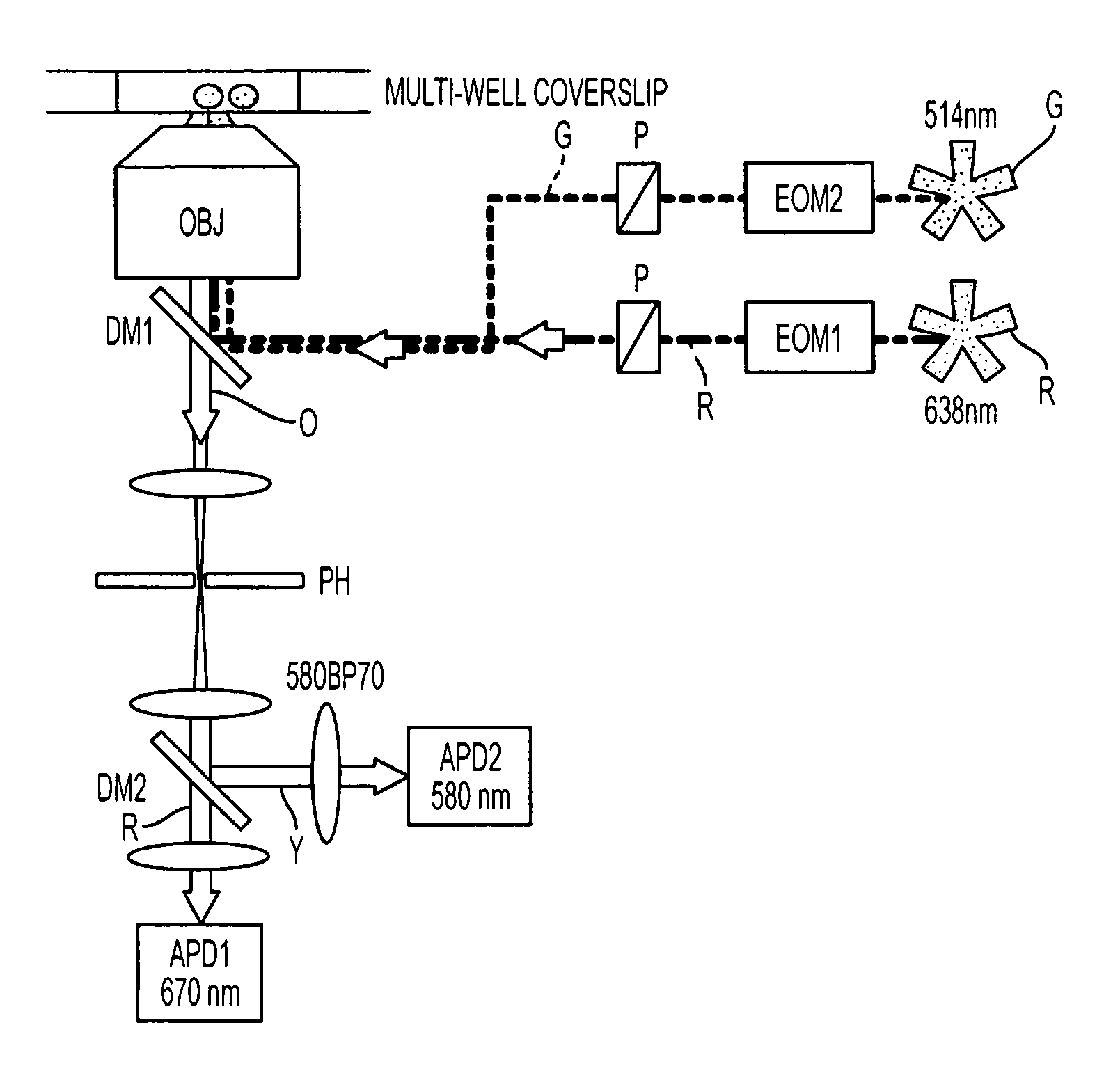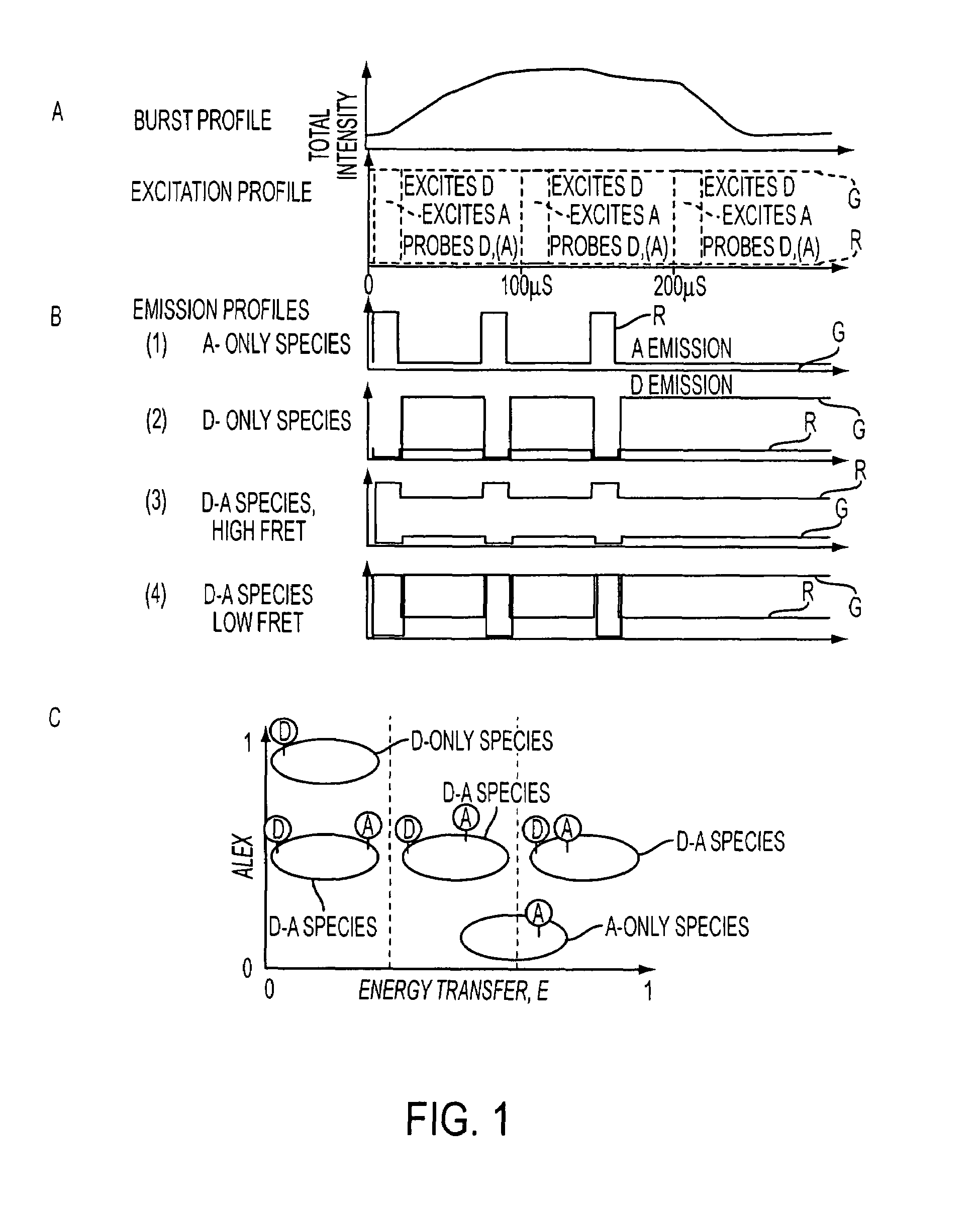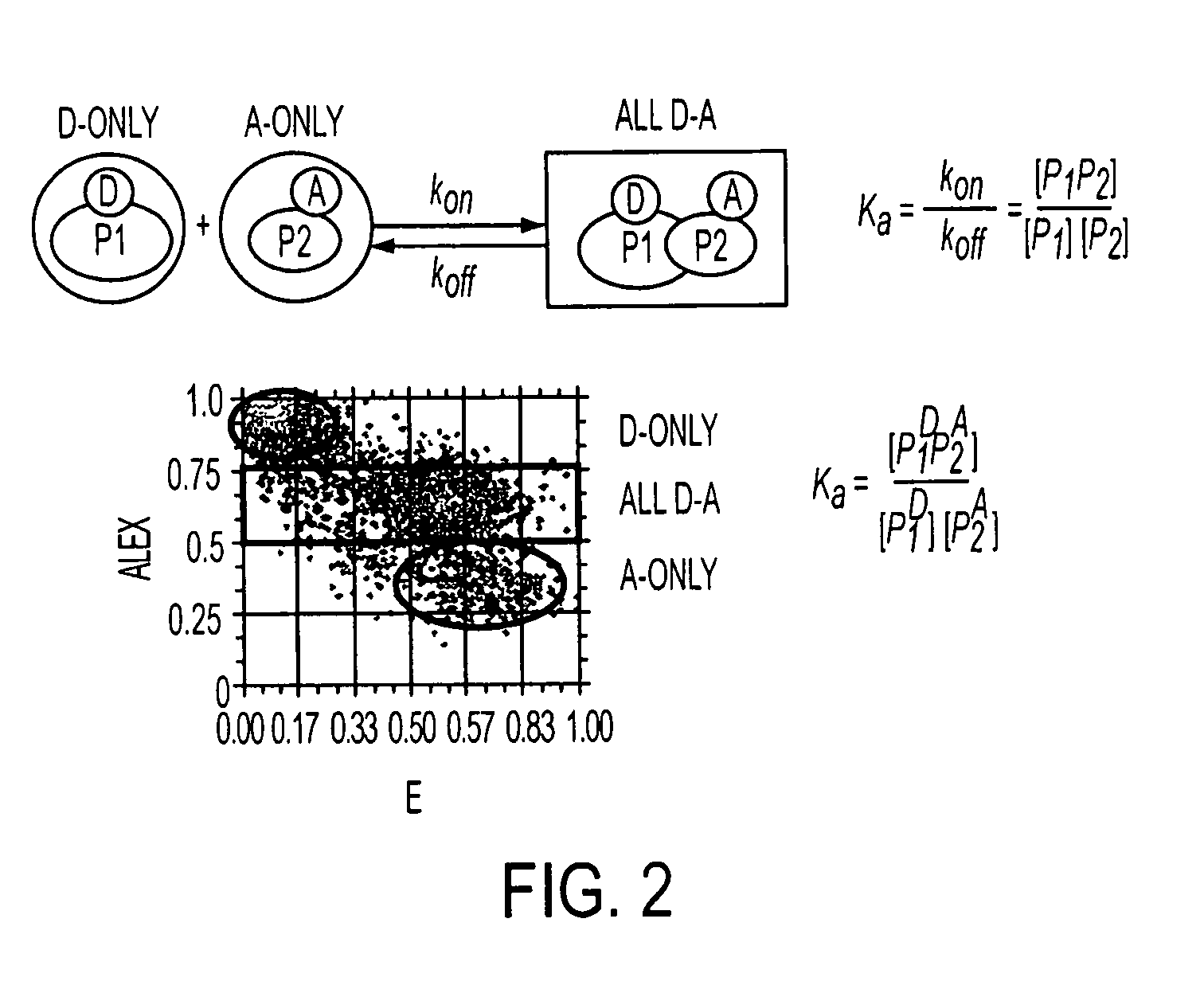Modulated excitation fluorescence analysis
a fluorescence analysis and excitation technology, applied in the field of analytical methods, can solve the problems of inability to accurately inability to detect the excitation intensity of the excitation intensity, and inability to correct the post-translational modification. , to achieve the effect of easy resolution and evaluation
- Summary
- Abstract
- Description
- Claims
- Application Information
AI Technical Summary
Benefits of technology
Problems solved by technology
Method used
Image
Examples
example 1
DNA Model Systems
[0075]Using the instrumentation shown in FIG. 3, the ability of the present invention to resolve species containing different numbers of donors and acceptors (and to recover RDonor-Acceptor) was explored by studying fluorescently-labeled DNA fragments carrying donor and acceptor probes separated by approximately 4, 7, and 11 nm, corresponding respectively to high, low and zero-FRET species (FIG. 4A) [39]. 35 base pair DNA fragments were prepared by total synthesis using known-procedures. The sequence of the top strand was similar to one used in Ref. 25 with modifications that ensured identical local environment for the fluorophores used in each sample. We incorporated amino-dT residues (Glen Research, Sterling, Va.) at positions 1 or 5 of the top strand. The sequence of the bottom strand was complementary to the top strand. We incorporated amino-dT residues at positions 10, 20, or 30 of the bottom strand. Trityl-ON DNA fragments were HPLC-purified using a C2 / C18 μRP...
example 2
Monitoring Oligomerization
[0083]Several protein interactions are characterized by oligomerization of one or more of the interacting components. For example, most transcription factors oligomerize and bind to DNA with variable protomer:DNA stoichiometries. The ALEX ratio is sensitive to the ratio of the number of green fluorophores per complex (equivalent to donor fluorophores in the case of FRET) to the number of green fluorophores per complex (equivalent to acceptor fluorophores in the case of FRET). Specifically, for molecules with fluorophore stoichiometries‘green’2-‘red’,‘green’-‘red’, and‘green’-‘red’2 (separated by a large distance, E=0), the order: ALEX(‘green’2-‘red’)>ALEX(‘green’-‘red’)>ALEX(‘green’-‘red’2) applies. In this example, we evaluated the ability of the present invention to monitor oligomerization by comparing a DNA fragment carrying one ‘green’ (Alexa532) and one ‘red’ (Alexa647) with a DNA fragment carrying two ‘green’ and one ‘red’. The E-ALEX histograms for t...
example 3
Resolving Mixtures of Species with Simulated Variable Environment of the Fluorophores
[0084]The E-ALEX histogram is also sensitive to differences in the brightness and emission spectra of the donors present in donor-acceptor (or ‘green’-‘red’) species. This is important for species labeled by fluorophores with emissions that are not fully resolved. It also allows the differentiation between species of the same composition that experience different local environments that affect molecular brightness (by quenching or photo-brightening). To demonstrate this ability, we prepared 3 DNA fragments, each with a different donor (TMR, Alexa532, or Cy3B), but identical acceptor (Alexa647), separated by the same distance (approximately 7 nm). The fragments were analyzed in the same manner as Example 1. The results show marked E and ALEX differences between samples with the different donors. The discrimination along both E and ALEX axes allows increased resolution of species using double 2D-Gauss...
PUM
| Property | Measurement | Unit |
|---|---|---|
| size | aaaaa | aaaaa |
| distance | aaaaa | aaaaa |
| distances | aaaaa | aaaaa |
Abstract
Description
Claims
Application Information
 Login to View More
Login to View More - R&D
- Intellectual Property
- Life Sciences
- Materials
- Tech Scout
- Unparalleled Data Quality
- Higher Quality Content
- 60% Fewer Hallucinations
Browse by: Latest US Patents, China's latest patents, Technical Efficacy Thesaurus, Application Domain, Technology Topic, Popular Technical Reports.
© 2025 PatSnap. All rights reserved.Legal|Privacy policy|Modern Slavery Act Transparency Statement|Sitemap|About US| Contact US: help@patsnap.com



